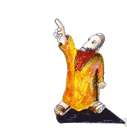| I have always liked fables.
As a child, I read Aesop and Phedro, as well as the later European fabulists Samaniego, La Fontaine and Iriarte, all before I began to be interested in Jewish texts.
Ben Bag Bag, one of the sages of the Mishna, says regarding the Torah: "Read it and reread it because everything is in it" (Avot 5,25). And so it is; each time I submerge myself in the fascinating world of the Jewish sources, I find new treasures. Some years ago, when reading the final pages of Sefer Ha-Aggadah by Bialik and Ravnitzki, I discovered 39 fables, one of which I knew from having read it as a child, although at the time I didn't know who the author was.
It was then that I returned, after many years, to the classic fabulists. I was surprised to find that many of their fables are also in the Talmud and the Midrash, centuries long written conversations about the Torah among the Jewish sages.
Thus was conceived the idea for this project, a work intended for the general reader. I have attempted to combine a brief study of the fables in the Talmud and the Midrash with the presentation of the fables themselves. Marcelo Ferder has created a magnificent illustration for each fable, resplendent with light and color.
I hope this book will beckon not only the young reader, but the general reading public as well.
In the essay at the end of this book called "About Fables, Midrash and Talmud," readers will find a basic explanation of the Jewish texts called the Talmud and Midrash, as well as an overview of the fable, a literary form found in many cultures. Notes to each fable provide information about how the fable was used in the original Jewish sources.
I would like to express my appreciation to Sandy Berkofsky-Santana for her English translation of this work, to Marcelo Ferder for the enthusiasm he brought to the project and his beautiful art, to Professor Avraham Holtz and Dr.Adolfo Roitman for their comments and suggestions, and to Judith Kerman and Amee Schmidt for the final stylistic revisions. Finally, my deep thanks go to Karen Ostreicher for her constant encouragement and support.
I have learned much from writing this book and have enjoyed myself in the process. I hope you will, too.
-- Rabbi Manes Kogan
|


